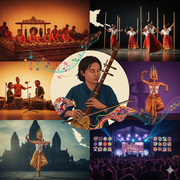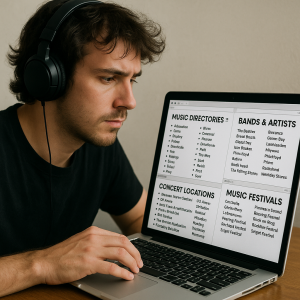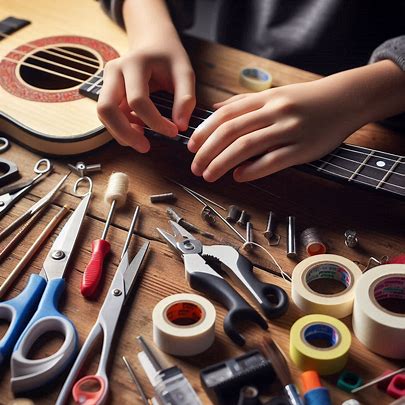How TV Soundtracks Stir the Heart and Define Every Scene You Stream on 123Movies

All TV moments considered great and phenomenal equally possess one trait: their music. For instance, as you watch TV series for free on 123Movies, you may notice that a single note on a piano or one single note from a singer’s mouth may take a simple situation and make it a salient one.
Music does not merely synchronize a plot; it breathes and dictates the plot on how the audience is supposed to feel, react, and remember every episode.
Take, for instance, the emotionally scarring chords and melodies of a psychological thriller compared to the emerging happy tones played in a romantic comedy; a painted picture of a music score becomes a mute symphony of sorts, each not louder, yet detailed, which becomes a story in its own right.
It builds, strains, resolves, and everything in between. Music is a sense of understanding for every single piece of work and art.
The Emotions Woven in the TV Music
Apart from guiding an audience’s mind in a desired direction, TV music is precisely formulated and mapped to check their feelings and emotions. The score in Heartbeats: a single score or a single note may speed them, make them nostalgic, or sometimes even bring tears.
The speedy and panicky moments of suspense give way to a certain eerie calmness. To remove the abstract control, the internal make from these is focus, dub, anticipation, feel, and finally bringing the pulses to the shoulders.
Whatever the reason may be, these creations act as a spine to the internal. Take, for instance, how the scores and pieces in Breaking Bad and Euphoria reflect the emotions and mindset of the characters.
The rhythm, tone, and atmosphere of these pieces shaped not for them is how it would feel streamed. The audience and the characters build a bond. It is not manipulative; it is a spine of emotions simply fused and molded through the sound and the pieces.
ALSO READ: 5 Benefits of Pairing Music with Sports Broadcasting
Music as a Unifying Activity
Aside from eliciting feelings, there is TV music for all ages and cultures. When a television show contains a song that becomes a viral trend, it highlights the synergy between television and the music industry.
Streaming platforms enhance this synergy by enabling instantaneous access to television shows from all over the globe, as well as their accompanying soundtracks, enabling patrons to explore the works of various musicians from disparate cultures and languages.
An example of this is 123Movies, which allows TV soundtracks from around the world to reach audiences that would not otherwise have access to them.
Through ongoing exposure, audiences don’t just engage with various narratives; they also get to experience various forms of music from around the world—ranging from K-Pop to Italian orchestras—thereby transforming their sound appreciation.
Why Music is Used to Recall a Show
Get anyone to list their favorite shows, and the chance that they will whistle the theme song is as high as them describing a scene from the show. We all know that, although a show is full of riveting scenes, the music plays a significant role in heightening the drama and impacting the audience’s emotions.
For instance, the theme of Friends is guitar-driven, while there is an orchestral score for Game of Thrones. These would surely be part of the world’s cultural heritage.
During the research one of the significant discoveries was the intertwining bond of music and TV series. Stories live forever in the hearts of the audience. Next time you stream a series, take a moment to notice the background music.
It is more than just a series of tunes. It is a multifaceted kaleidoscope of feelings in a symphony.

 Music has always been a universal companion to labor. Whether in construction, cleaning, or creative fields, it keeps workers motivated, improves focus, and creates a sense of flow. For tile
Music has always been a universal companion to labor. Whether in construction, cleaning, or creative fields, it keeps workers motivated, improves focus, and creates a sense of flow. For tile 

 A place where gamelan organizations, whose rhythms are complex and necessary to social activities and rituals, come together.
A place where gamelan organizations, whose rhythms are complex and necessary to social activities and rituals, come together. For music fans, there’s something special about live performances. The raw energy, spontaneous moments, and unique interpretations make live recordings feel
For music fans, there’s something special about live performances. The raw energy, spontaneous moments, and unique interpretations make live recordings feel  Music can do more than just entertain—it can help people focus, improve their mood, and even boost work performance. This is true for many cleaning professionals, including those in the carpet cleaning business. While scrubbing stains and operating machines may seem like purely physical tasks, there’s a mental side to the job too. For many carpet cleaning pros, music plays a big role in how they manage long days and demanding work.
Music can do more than just entertain—it can help people focus, improve their mood, and even boost work performance. This is true for many cleaning professionals, including those in the carpet cleaning business. While scrubbing stains and operating machines may seem like purely physical tasks, there’s a mental side to the job too. For many carpet cleaning pros, music plays a big role in how they manage long days and demanding work. In many Asian cultures, especially in Chinese opera, there is a unique art called “mask changing” or Bian Lian. This performance art involves skilled performers’ mask changing performance Singapore in the blink of an eye—sometimes without even touching their face. What makes this act even more captivating is the music that plays in the background. Together, music and mask changing create a theatrical experience that’s both powerful and mysterious.
In many Asian cultures, especially in Chinese opera, there is a unique art called “mask changing” or Bian Lian. This performance art involves skilled performers’ mask changing performance Singapore in the blink of an eye—sometimes without even touching their face. What makes this act even more captivating is the music that plays in the background. Together, music and mask changing create a theatrical experience that’s both powerful and mysterious. Plumbing systems have their own kind of rhythm. Whether it’s the repetitive tap-drip of a leaky faucet or the sudden whoosh of a flush, these noises follow patterns. Our brains naturally latch onto rhythm. Musicians, in particular, are wired to recognize these sequences and use them creatively. Many producers record the sounds of water moving through pipes and use them as percussive elements or background ambiance.
Plumbing systems have their own kind of rhythm. Whether it’s the repetitive tap-drip of a leaky faucet or the sudden whoosh of a flush, these noises follow patterns. Our brains naturally latch onto rhythm. Musicians, in particular, are wired to recognize these sequences and use them creatively. Many producers record the sounds of water moving through pipes and use them as percussive elements or background ambiance. Children naturally gravitate toward rhythm and sound. Tapping their feet to a beat or humming a tune comes as easily as breathing. Combining this instinct with STEM education—science, technology, engineering, and math—creates a powerful learning tool. Music makes abstract concepts tangible. It sparks creativity while grounding complex ideas in something familiar. This blend transforms classrooms into vibrant spaces where kids explore, experiment, and connect.
Children naturally gravitate toward rhythm and sound. Tapping their feet to a beat or humming a tune comes as easily as breathing. Combining this instinct with STEM education—science, technology, engineering, and math—creates a powerful learning tool. Music makes abstract concepts tangible. It sparks creativity while grounding complex ideas in something familiar. This blend transforms classrooms into vibrant spaces where kids explore, experiment, and connect. There’s nothing worse than laying down a killer track, only to have the room turn into a sauna—or worse, a freezing icebox that makes your fingers too stiff to play. Whether you’re a professional music producer or a weekend jam session enthusiast, air conditioning can make or break your studio experience. A well-regulated climate doesn’t just keep you comfortable—it affects your instruments, recording quality, and overall workflow. That’s why many studios rely on ducted air conditioning for consistent, even cooling without the noise of traditional units. So, let’s dive into the sweet spot of AC settings for the ultimate music studio environment.
There’s nothing worse than laying down a killer track, only to have the room turn into a sauna—or worse, a freezing icebox that makes your fingers too stiff to play. Whether you’re a professional music producer or a weekend jam session enthusiast, air conditioning can make or break your studio experience. A well-regulated climate doesn’t just keep you comfortable—it affects your instruments, recording quality, and overall workflow. That’s why many studios rely on ducted air conditioning for consistent, even cooling without the noise of traditional units. So, let’s dive into the sweet spot of AC settings for the ultimate music studio environment.
